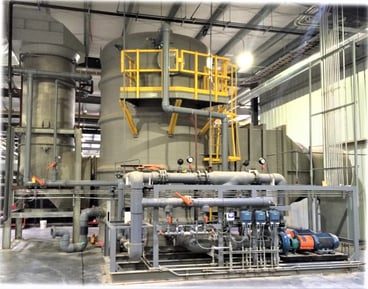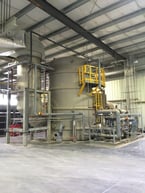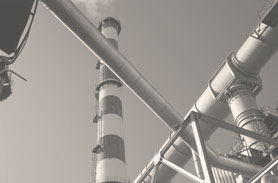Optimized Wet Scrubber Design for Lime Kilns
A properly designed wet scrubber is a highly efficient approach to controlling lime kiln emissions which contain SO2 and HCl acid gases, metals, and particulate matter. A Venturi scrubber followed by a cross-flow entrainment separator has the advantages of a small footprint. A multi-clone upstream of the Venturi scrubber removes the bulk of the lime dust. The multi-clone keeps the majority of the lime dust in a dry form. This reduces maintenance in the scrubber and greatly reduces the quantity of scrubber sludge. The wet scrubber can also be operated in a flue gas desulphurization mode resulting in a gypsum byproduct. Often the initial capital investment for a wet scrubber is less than a dry injection fabric filter. This results in low operating costs and significant savings for lime kiln facilities.
 Wet scrubbers offer four key advantages for brick kiln facilities:
Wet scrubbers offer four key advantages for brick kiln facilities:
• Meet current EPA MACT regulations
• Dramatically reduce maintenance associated with precipitate build-up
• Minimize scrubber sludge and produce a saleable waste product
• Provide design flexibility for meeting future CO2 and SOx EPA regulations
Keys for achieving optimized wet scrubber design are:
• Cooling the gas stream to saturation prior to the Venturi scrubber
• Minimizing precipitate build-up by removing dust prior to the scrubber,
oxidizing CaSO3, and providing automated pH control of the scrubber recirculation liquid
• Providing efficient mist elimination
Design features for an optimized wet scrubber include:
• Evaporative cooler to pre-cool the gas stream
• Multi-clone to remove the majority of particulate prior to the Venturi scrubber
• Oxidation of CaSO3 to CaSO4 to reduce precipitated sulfite build-up
• Chevron style mist eliminator to achieve > 99.9% drop removal efficiency




